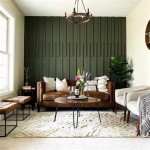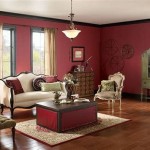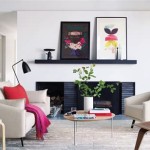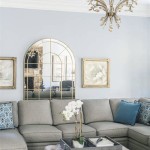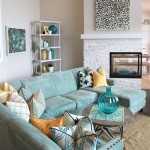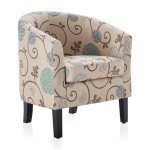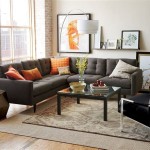Turning A Living Room Into a Bedroom: Practical Considerations and Design Strategies
Transforming a living room into a functional bedroom requires careful planning and execution. This conversion can be necessary for various reasons, including accommodating a growing family, providing space for a caregiver, or maximizing the utility of a smaller dwelling. A successful conversion focuses on balancing privacy, comfort, and the preservation of the living room's original function, where applicable. This article will explore key considerations and design strategies for effectively converting a living room into a comfortable and practical bedroom.
Prioritizing Privacy and Soundproofing
One of the most significant challenges in this conversion is ensuring adequate privacy. Living rooms are typically designed as open, communal spaces, lacking the inherent privacy of a traditional bedroom. Addressing this requires employing measures to visually and acoustically separate the newly created sleeping area.
Partitioning Strategies: A range of partitioning options exist, each with its own advantages and disadvantages. Permanent walls offer the most effective sound and visual barrier but involve significant construction and potential impact on the building's structural integrity. Alternatively, temporary or semi-permanent solutions provide flexibility and less disruption. These include:
- Room Dividers: Freestanding screens, folding panels, or curtains can create a visual barrier, offering a degree of privacy. These are relatively inexpensive and easy to install, but they provide minimal sound insulation.
- Bookshelves or Storage Units: Strategically placed bookshelves or storage units can act as room dividers while simultaneously providing storage space. Choosing units with a solid back panel will enhance their effectiveness as a visual and acoustic barrier.
- Sliding Doors or Accordion Walls: These offer a more robust solution, providing a greater degree of privacy and sound insulation. They can be easily opened to create a larger living space when the bedroom is not in use.
- Curtains: While less effective at blocking sound, heavy, floor-to-ceiling curtains can provide visual privacy and can be easily adjusted or removed as needed. Blackout curtains are a particularly good choice for ensuring darkness for sleep.
Soundproofing Techniques: Beyond physical partitioning, addressing sound transmission is crucial. Soundproofing a living room-turned-bedroom can significantly enhance the occupant's comfort and sleep quality. Several methods can be employed to achieve this:
- Acoustic Panels: These panels are designed to absorb sound waves, reducing reverberation and noise transmission. They can be strategically placed on walls and ceilings to minimize noise levels.
- Soundproof Curtains or Blankets: These are specifically designed to absorb sound and can be hung on walls or windows to reduce noise transfer.
- Sealing Gaps and Cracks: Air gaps and cracks around doors, windows, and electrical outlets can allow sound to easily travel. Sealing these gaps with caulk or weather stripping can significantly reduce noise transmission.
- Consider Flooring: If the original flooring is hardwood or tile, adding a thick rug can help to absorb sound and create a more comfortable sleeping environment.
When choosing partitioning and soundproofing methods, it's important to consider the existing layout of the living room, the available budget, and the occupant's specific needs and preferences. A combination of strategies may be the most effective approach for achieving the desired level of privacy and sound insulation.
Optimizing Space and Functionality
Living rooms typically serve multiple functions, including lounging, entertaining, and sometimes even dining. When converting a living room into a bedroom, it is crucial to consider how to maintain some semblance of the room's original function while still providing a comfortable and functional sleeping space. This requires careful consideration of space management and the incorporation of multi-functional furniture.
Multi-Functional Furniture: Selecting furniture that serves multiple purposes is essential for maximizing space in a living room-turned-bedroom. Some key considerations include:
- Sofa Beds: A sofa bed provides seating during the day and converts into a bed at night. This is a classic solution for maximizing space in a smaller living area. Choosing a sofa bed with a comfortable mattress is crucial for ensuring a good night's sleep.
- Storage Beds: Beds with built-in drawers or lift-up platforms provide valuable storage space for clothing, linens, and other items. This helps to minimize clutter and maximize the use of vertical space.
- Ottomans with Storage: Ottomans can serve as footrests, extra seating, or even coffee tables while also providing hidden storage space.
- Fold-Away Desks or Tables: These can be folded up and stored away when not in use, freeing up valuable floor space.
Storage Solutions: Maximizing storage is crucial for keeping the living room-turned-bedroom organized and clutter-free. Consider these options:
- Vertical Shelving: Utilize wall space by installing shelves to store books, decorative items, and other belongings.
- Under-Bed Storage Containers: These provide a convenient way to store clothing, bedding, and other items under the bed.
- Wall-Mounted Cabinets: Cabinets can be mounted on the wall to provide additional storage space without taking up valuable floor space.
- Maximize Closet Space: If the living room has a closet, ensure it is efficiently organized with shelves, drawers, and hanging rods to maximize its storage capacity.
Layout Considerations: The layout of the room is critical for optimizing space and functionality. Consider these guidelines:
- Placement of Bed: Position the bed in a way that minimizes disruption to the flow of traffic through the room. Avoid placing the bed directly in front of a doorway or window.
- Create Zones: Define separate zones for sleeping, lounging, and storage. This can be achieved by using furniture, rugs, or lighting to visually separate the different areas.
- Maintain a Clear Path: Ensure there is a clear path of travel through the room to avoid creating a cluttered or cramped feeling.
- Utilize Natural Light: Maximize the use of natural light to make the room feel more open and airy. Avoid blocking windows with furniture or curtains.
By carefully considering these space and functionality considerations, it is possible to create a comfortable and practical bedroom within a living room setting.
Addressing Lighting and Ventilation
Proper lighting and ventilation are essential for creating a comfortable and healthy living environment. These factors are particularly important when converting a living room into a bedroom, as inadequate lighting or ventilation can negatively impact sleep quality and overall well-being.
Lighting Design: Living rooms typically have different lighting needs than bedrooms. Bedrooms often require softer, more ambient lighting to promote relaxation and sleep, in addition to task lighting for reading or getting dressed. Consider these lighting strategies:
- Layered Lighting: Incorporate different types of lighting to create a versatile and comfortable atmosphere. This includes ambient lighting (e.g., overhead lights or lamps), task lighting (e.g., reading lamps or desk lamps), and accent lighting (e.g., wall sconces or decorative lights).
- Dimmer Switches: Install dimmer switches on overhead lights and lamps to control the intensity of the light. This allows for creating a softer, more relaxing atmosphere in the evening.
- Blackout Curtains: Blackout curtains are essential for blocking out external light and ensuring a dark sleeping environment.
- Nightlights: Consider using a nightlight to provide a soft, comforting glow in the room during the night.
- Avoid Blue Light Before Bed: Reduce exposure to blue light from electronic devices (e.g., smartphones, tablets) in the evening, as it can interfere with sleep. Consider using blue light filters on devices or avoiding screen time for at least an hour before bed.
Ventilation Strategies: Proper ventilation is crucial for maintaining air quality and regulating temperature in the living room-turned-bedroom. Consider these ventilation options:
- Natural Ventilation: If possible, open windows to allow fresh air to circulate through the room. This can help to improve air quality and reduce humidity levels.
- Fans: Use fans to circulate air and improve ventilation. Ceiling fans are a good option for circulating air throughout the room, while portable fans can be used to direct airflow to specific areas.
- Air Purifiers: Consider using an air purifier to remove dust, pollen, and other allergens from the air. This can be particularly beneficial for individuals with allergies or respiratory problems.
- HVAC System: Ensure the HVAC system is functioning properly and that the vents are properly positioned to provide adequate airflow to the living room-turned-bedroom.
- Humidity Control: Monitor humidity levels in the room and take steps to control them if necessary. High humidity can promote mold growth and create an uncomfortable sleeping environment. Use a dehumidifier to reduce humidity levels if necessary.
By carefully addressing lighting and ventilation, it is possible to create a comfortable and healthy living environment in the converted living room. Adequate lighting can promote relaxation and sleep, while proper ventilation can ensure good air quality and temperature regulation.

How To Turn A Living Room Into Bedroom 6 Easy Steps Torera George

Extreme Living Room To Bedroom Makeover From Start Finish Shooketh

A Cozy Farmhouse Den Previously The Master Bedroom Andrea Dekker

Turn Your Living Room Into A Bedroom Here S How

7 Best Ideas To Turn Living Room Into Bedroom

Bedroom To Living Room Transformation Easy Diy Nyc Apartment 2024 Youtube

Turning A Living Room Into Bedroom

How To Divide A Living Room Into Bedroom The Inside

Small One Room Apartment Ideas

Converting Living Room Into Bedroom Bath Part I Youtube

